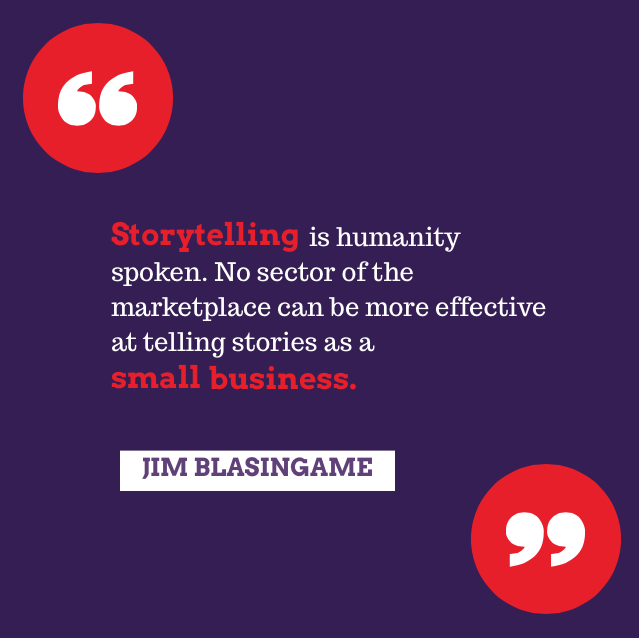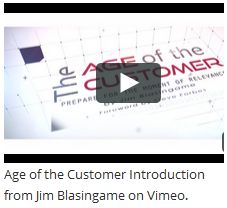Don’t be stupid — eliminate barriers of customers to your small business
A while back, I needed to reach an acquaintance who worked in a local branch of one of the national banks. When I looked for the local number in the phone book, all I found was a toll-free number that connected me to a computer answering system. That’s right – a local business didn’t publish a local number in the phone book, and here’s the stupid part: The answering system didn’t offer an option to connect to any branch or person.
 From this one encounter stemmed a powerful story and four equally powerful lessons I thought worth sharing to big and small businesses out there.
From this one encounter stemmed a powerful story and four equally powerful lessons I thought worth sharing to big and small businesses out there.
Lesson 1 – Don’t create barriers to customers and prospects.
If you have any, take them down NOW! I know you think you don’t, but in the name of efficiency and the advent of new technology, you might.
Undaunted, I called a local board member of that bank who gave me the local number (yes, they had one). When I called, I was told that my acquaintance, a loan officer, had recently been laid off.
“Why was he laid off?” I asked. Since the bank was losing money and, for the sake of the stock price the CEO needed to impress the stock analysts with his guidance on the next quarterly conference call. So an edict came down that almost 2,000 employees across the company would have to hit the bricks. Never mind how valuable they were, or what such cuts would ultimately do to the bank’s long-term ability to compete, “We’ve got to cut costs and the quickest way is to cut payroll.”
Lesson 2 – Quarterly goals are important for planning.
For a publicly traded company, quarterly guidance to stock analysts is a counter-intuitive and dangerous practice for long-term success. Small businesses have to remember that customers don’t buy based on quarterly schedules, so don’t let your quarterly pressure on sales people cost you lost business and, worse, lost relationships.
I learned later that even though my acquaintance was the top loan producer, he was the last one hired, and also the first to go. Now he’s no longer a payroll drain on this bank, but he is now kicking the backside of his former employer as a high-producer with a competitor.
Lesson 3 – In the 21st century, seniority doesn’t trump productivity.
Today, this bank is one of those that had to be bailed out by the government. The bank CEO, who allowed blind devotion to stock price undermine the tried-and-true management practices of building a strong team and taking care of customers, is now no longer a drag on that bank’s payroll.
How much business did this bank lose because of that phone answering strategy? What would have happened if this bank CEO had simply installed an answering system that made sure anyone who wanted to call a local branch could not only find that number easily, but quickly connect to a local person? The answer might be that the CEO would still have his job, and so would my friend and several hundred other former employees. Who knows? By simply adopting a customer-friendly phone system, this bank might have actually needed to hire more employees to handle all of the new business.
Lesson 4 – If you need more sales revenue, make sure your organization’s people, systems, and policies aren’t getting in the way
Recently, on my small business radio program The Small Business Advocate Show I talked about the potential dangers of quarterly policies with sales management expert and Brain Trust member, Skip Miller (m3learning.com), author of The Ultimate Sales Tool Kit. Take a few minutes to listen to what this smart guy has to say and be sure to leave your smart thoughts.
Allow customers to see your authentic side through writing
Adam Smith, the father of modern economics and author of The Wealth of Nations (1776), identified writing as one of the three most important inventions of mankind – the other two being money and economic tables.
More than two centuries later, the Internet has powered the written word to levels unimagined only a generation ago, let alone during Smith’s era. It is the driving force behind a handy new-media maxim, “Content is King.”
In an era when content is king, if you want to connect with customers competitively and stay connected, you have to produce more written words than ever before. But not just any words – authentic words.
After all, today we’re consumers of many kinds of online content. From streaming audio and video to multi-media formats on iTunes and YouTube. In the midst of all it, the most popular content — hence the Kingly content — still remains most popular in its graphic form, like what Smith would have used.
Since 1999 – long before blogs and social media – two things I’ve encouraged small business owners to do is:
- develop better writing skills
- publish more of their own words online that communicate to and connect with customers.
Since 2010, prospects and customers want to read about the stuff you sell before they meet you. But they want more than marketing messaging; they want authentic, straight-from-the-horse’s-mouth information that delivers three things that are increasingly a big deal to customers:
1. the voice,
2. the vision, and
3. the values of the human beings behind the stuff, as unartful and unscripted as they may be.
So don’t worry if you’re not a professional wordsmith. When you need fancy words for strategic marketing messaging, online or otherwise, hire a pro.
But you must become comfortable with conveying your vision and values online, in your own words – the voice – about a variety of issues from explaining how to use a product you sell to a local cause you care about to your philosophy on serving customers. And it’s just fine if some of these authentic words also come from your employees who customers will get to know.
In the Age of the Customer®, now armed with as much information as the businesses they patronize, customers expect to be treated more like insiders. And the good news is that no one makes this connection as effectively and authentically as a small business. Congratulations.
Let customers read about your authentic side with your voice, vision, and values.
Small business lessons from big business mistakes
Here is a true story from which several business lessons can be learned.
A while back, I needed to reach a friend who worked in the local office of a national company. Searching the phone book and online, I found only a toll-free number that connected to an answering system for the entire company. That’s right – this business didn’t publish a local number anywhere. And incredibly, this automated system did not offer an option to connect to any local branch or person. I’m not making this up!
Searching the phone book and online, I found only a toll-free number that connected to an answering system for the entire company. That’s right – this business didn’t publish a local number anywhere. And incredibly, this automated system did not offer an option to connect to any local branch or person. I’m not making this up!
Lesson 1: Don’t create barriers to customers. Even if you think you don’t have barriers, look anyway, because you might. Ask employees and customers to help you find them.
Undaunted, I finally acquired the local number (yes, they had one), but the person who answered said my friend, who was in sales, had been laid off. It turns out that this publicly-traded corporation was losing money, so in order for the CEO to impress Wall Street analysts, who influence the stock price, almost 2,000 employees across the company were told to hit the bricks.
N ever mind how valuable these employees were or if those cuts would hurt the company’s long-term performance; the quickest way to increase profits was to cut payroll.
ever mind how valuable these employees were or if those cuts would hurt the company’s long-term performance; the quickest way to increase profits was to cut payroll.
Lesson 2: Performance goals are important for planning, but customers don’t always buy on your schedule. Don’t let short-term expense pressures cost you sales, and worse – long-term customer relationships.
I learned that my friend had been a top producer, but since he was the last one hired he was the first to go. He’s no longer a payroll drain on his former employer, but one of their competitors quickly snapped up this winner.
Lesson 3: In the 21st century, seniority doesn’t trump performance.
So what if this big business CEO had simply installed a phone system that made sure customers could connect to his local offices? The answer is that my friend and several hundred others may not have been fired.
And who knows? By simply eliminating one customer barrier, this company might have needed to hire more employees to handle all of the business that went elsewhere.
Lesson 4: How you run your business – including people, systems, technology and policies – is not more important than the ever-evolving expectations of prospects and customers.
By the way, that big business that taught us these valuable lessons is no longer in business.
Think you don’t have customer barriers? Neither did that big business CEO.






